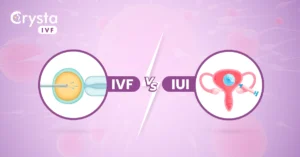Menstruation is shrouded in taboos and myths across society. Menstruating women cannot participate in religious and social ceremonies in India. To some extent, such taboos affect the girls’ mental well-being, lifestyle, and, most significantly their health.
The problem lies in a lack of understanding about puberty, menstruation, and reproductive health. Learning about the female menstrual cycle and how it works can help you understand and anticipate changes in your body throughout the month. After all, perhaps it is not wrong to learn more about your own body.
What is the menstrual cycle?
Menstruation is the body’s way of preparing for pregnancy. Normal vaginal bleeding occurs in a female body every month.
It is the result of hormonal interactions inside the uterus.
A woman starts menstruating at around 13 years of age and continues doing so until around age 45-55 when she reaches menopause.
For around 30 years, a female menstruates and loses about 35-80 ml of blood every month.
It is the monthly change in the body when one of the ovaries releases an egg in a process known as ovulation. Hormonal changes are also preparing the uterus for pregnancy at the same time. If the egg does not unite with sperm, the uterine lining is shed via the vaginal opening and thus menstrual bleeding occurs.
Phases of the menstrual cycle
A lot happens on the inside during a woman’s menstrual cycle, which has four phases:
- Menstrual phase
- Follicular phase (before egg release)
- Ovulation phase (egg release)
- Luteal phase (post-release of the egg)
Menstrual Phase
The menstrual phase is the first part of the menstrual cycle. It’s also the time of the month when you get your period.
When an egg from the previous cycle is not united with sperm, this phase begins. To put it another way, the endometrium, the thicker lining of the uterus, is lost through the vaginal canal during your menstrual cycle.
The fluid in the menstrual cycle is made up of bleeding from arteries, veins, and capillaries, as well as mucus and uterine cells.
You can be experiencing the following symptoms during your period:
- Cramps and aches
- Tender breast
- Bloating
- Headache
- Exhaustion
- Lower backache
- Moods wings
- Irritability
Women are in the menstrual phase of their cycle for 3 to 7 days on average.
Follicular phase
The ovaries begin to prepare an egg for release during the follicular phase. During this phase, you may experience thick vaginal discharge (white discharge). The hormones influenced during this phase cause the uterus to thicken its lining in preparation for the zygote (union of egg and sperm) to implant.
The menstrual cycle’s follicular phase begins on the first day of the period and lasts until ovulation.
In this phase, your estrogen levels grow and the pituitary gland receives a signal from the brain to release the follicle-stimulating hormone (FSH). This FSH hormone causes your ovaries to generate 5 to 20 follicles, which are tiny sacs. The average follicular phase lasts roughly 16 days.
Ovulation phase
This phase starts two weeks before the period. During this phase, the levels of estrogen peak and then quickly decline. During the ovulation phase, a rise in estrogen levels stimulates the pituitary gland to release luteinizing hormone (LH). The ovulation process is initiated by the luteinizing hormone.
Women can only become pregnant during the ovulation phase of the menstrual cycle. As in the Ovulation process, the ovary produces a fully mature egg. As the egg travels down the fallopian tube toward the uterus, it is fertilized by sperm.
Symptoms like these can indicate that you’re ovulating:
- A moderate increase in basal body temperature
- Thicker vaginal discharge
If you have a 28-day cycle, ovulation occurs around day 14, in the middle of your menstrual cycle. The time frame of the developed egg that is released from the ovary corresponds to your reproductive days.
It lasts approximately 24 hours. If the egg doesn’t get fertilized within a day, it will die or disintegrate.
It is important to be aware of your ovulation period and fertile days if you are contemplating pregnancy.
Luteal phase
The luteal phase begins after ovulation and lasts about 14 days, ending just before menstruation unless pregnancy occurs. The endometrium is of no use if the egg does not unite with sperm and begins to break down.
You may suffer cramping a week before your period as your uterus contracts to lose the lining. Also, other hormonal changes are triggering the mental state at this stage.
The luteal phase is the period that occurs between ovulation and the first day of the period. In this phase, your progesterone levels rise, which is necessary to keep the uterine lining thick enough to nurse the fertilized egg.
The duration of the luteal phase is 11 to 17 days.
In a nutshell
Every month, this menstrual cycle repeats itself. The menstrual cycle is unique to each woman. Every month, some women receive their period at the same time whereas some women show the variation of 22 days to 35 days of the cycle. Some women bleed more profusely or for longer periods than others.
These menstrual cycle phases describe how a woman’s period cycle works and can help you better understand the changes you’re going through, such as increased vaginal discharge, period pain, emotional highs and lows, and other symptoms.
Tracking your periods is one approach to see whether you’re having any problems with your menstrual cycle. Take notes about when they begin and end. Keep track of any variations in the amount of blood you bleed or the number of days as well as any spotting between periods for a healthy menstrual cycle.




